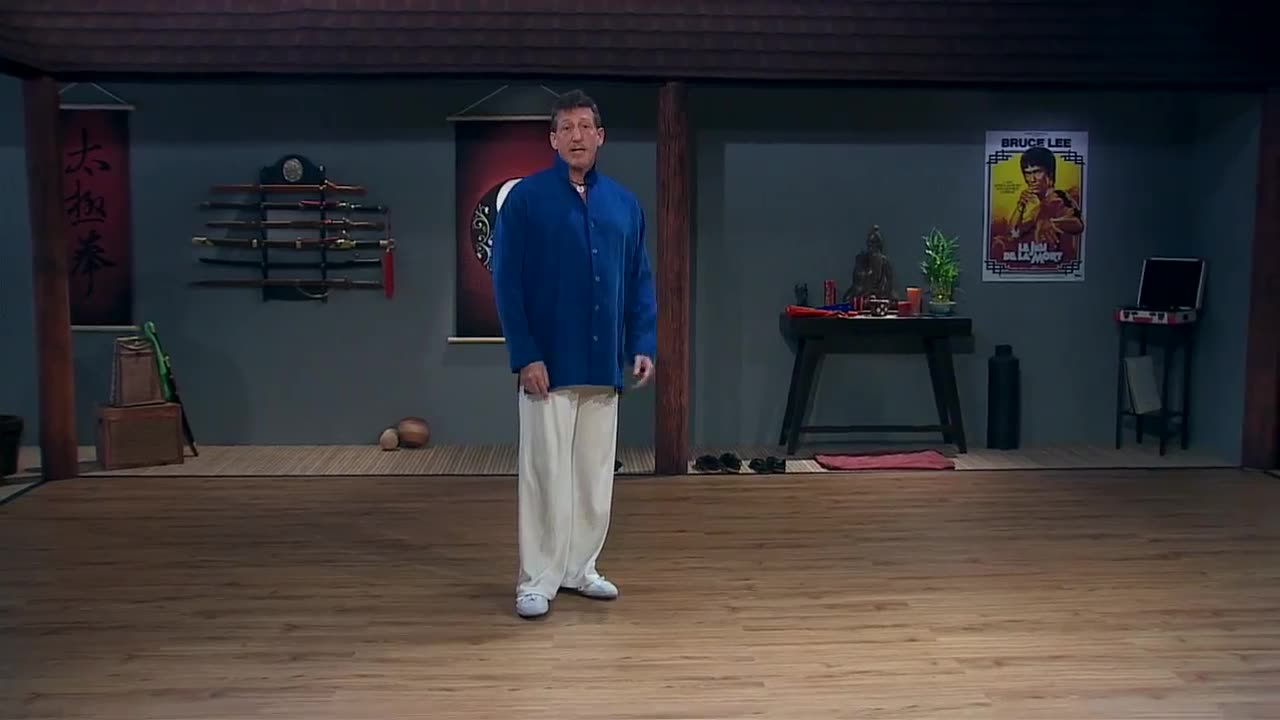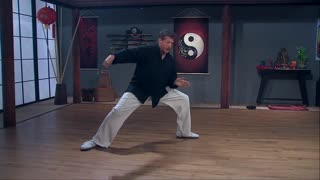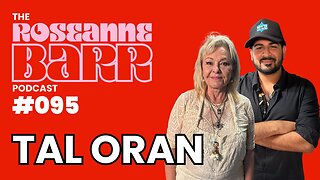Premium Only Content

09. Feet Separate Empty From Full
I
n this lecture, we’ll introduce two new movements: fair lady works at the
shuttles and part the horse’s mane. Both involve the upper and lower
body moving in concert, so we’ll break down the moves into pieces. After
that, we’ll turn to this lecture’s closing lesson: the concept of separating
empty from full.
Yù nǚ chuān suō (“Fair Lady Works the Shuttles”)
● The first movement we’ll learn in this lesson is called yù nǚ chuān
suō, which in English means, “fair lady works the shuttles.” It
picks up at the end of repulse the monkey, and we’ll cover the
footwork first.
● At the end of repulse the monkey, all your weight is on the right
foot. The left toe is tapping the ground. It’s an empty step. Pivot on
that left toe, turning the heel outward.
● The weight is still on the right foot until that toe turns out. The waist
turns to the right, the toe stays down, and the heel goes with the
turn. Now shift back to the left foot, turn the waist toward the right
some more, and pivot on the toe once again.
● Next, step down onto the right foot and step forward, so that your
left foot is now stepping into the corner and bow step. Your ultimate
goal is to come from facing east to facing southwest.
● As for the hands: From the end of repulse the monkey, you’ll have
one hand pushing forward. The right hand will be by your belly, and you’ll come to a hold-the-ball position briefly while the right
hand lifts up, circles around, and comes back down to the belly
again. It’ll be a complete 360-degree circle. Combine that move
with the step.
Zuoyou yémǎ fēnzōng (“Part the Horse’s Mane”)
● The next move is zuoyou yémǎ fēnzōng, which translates to “part
the horse’s mane.” Again, this is a two-step movement.
● From the last position of fair lady works the shuttles, sit back and
empty the right foot, then shift all the weight into the right foot to
create a t-step.
● As you shift to the left foot, turn the waist slightly to the left. As you
shift forward, turn the waist back to the right until you are facing
the northwest corner.
● As you turn the waist to the left, circle the left arm and hand
outward and downward to create the bottom half of the holdingthe-ball posture. The left arm finishes its arc as the waist turns to
the right, and the left forearm rotates outward to turn the palm up.
● As the waist turns left, the right arm simply travels with the turn
of the body. As the waist turns back to the right, the right forearm
rotates outward to turn the palm down and descends slightly to
form the top of the hold-the-ball posture.
● Open the left hip and step out wide (60 degrees) with the left foot
into the southwest corner. Shift the weight forward to create a bow
step. As you shift 60 percent of the weight into the left foot, the
waist turns to the left 45 degrees. In this position, the torso will
face squarely west.
● The left hand chops upward diagonally from the bottom of the ball
to extend out to the southwest corner, with the hand at shoulder
height. (Be sure to sink the elbow.) At the same time, the right hand pulls down to the hip level, palm down, close to the front of
the left thigh.
● For the second step of the movement, without shifting back, shift
forward onto the left foot to make a t-step. Then, step out with the
right foot to make a bow step facing west, this time, forming the
regular channel.
● As you step forward to make the t-step, rotate the right forearm
outward so that the palm turns upward, and scoop the right hand
under to form the bottom of the hold-the-ball position.
● Simultaneously, rotate the left forearm inward so that the palm is
up and curve it over to form the top of the hold-the-ball position.
As you step out to make the bow step, the right hand chops
upward diagonally from the bottom of the ball to extend out to the
northwest corner, with the hand at shoulder height. (Again, be sure
to sink the elbow.) At the same time, the left hand pulls down to
the hip level, palm down, close to the front of the left thigh.
Separate Empty and Full
● One important principle in tai chi is knowing empty versus full.
Tai chi has built into it a series of tests. There are tests that you
do in your individual, personal practices. There will also be tests
that you do with partners. Each time you take a test, you get a
chance to see whether or not you’re really doing what you think
you’re doing.
● If you think you’re doing something with a particular intention, you
have to see what the result of that action is. If the results match
your intention, you know that you have had a good idea. You know
that you have clearly distinguished empty from full.
● If you have an idea, you put it into your intention, you act on it,
and the results are not what you expected, then maybe you’re
double-weighted.
-
 30:35
30:35
Mastering Tai Chi
1 year ago21. Five Stages Of Mastery
206 -
 LIVE
LIVE
TimcastIRL
1 hour agoMASS SHOOTING At Florida State, Anti Trump Rumors ERUPT, MANGIONE EFFECT w/ Maggie Moda| Timcast IRL
26,590 watching -
 LIVE
LIVE
Roseanne Barr
3 hours ago $8.32 earned"God, Go Get em' Honey" W/ Tal Oran | The Roseanne Barr Podcast #95
9,766 watching -
 1:04:45
1:04:45
Donald Trump Jr.
5 hours agoThe Left’s Lunacy Knows No Bounds, Plus Taking Your Questions Live! | Triggered Ep234
87.8K110 -
 LIVE
LIVE
megimu32
2 hours agoON THE SUBJECT: Oops! The Internet Was Funny Before Feelings Got Involved
372 watching -
 LIVE
LIVE
Rebel News
9 hours ago $6.29 earnedLIVE: Rebels react as leaders face off in Day 2 English debate
2,534 watching -
 48:12
48:12
BonginoReport
4 hours agoTX AG Paxton Joins Hayley, Has Sights Set on Senate Seat - Nightly Scroll w/Hayley Caronia (Ep.29)
52.1K42 -
 37:56
37:56
Michael Franzese
3 hours agoThe Man Who Invented the Mafia: Lucky Luciano
28.1K7 -
 1:39:52
1:39:52
AirCondaTv Gaming
1 hour agoRed Alert 3: Uprising - This Command has an Uprising on Alert Pt. 2
5051 -
 14:49
14:49
BEK TV
22 hours agoEP 7 - DUNSEITH DECLASSIFIED: ALLEGED ATTEMPTED MURDER VICTIM ADDRESSES “LOVE TRIANGLE” RUMOR
5.53K1